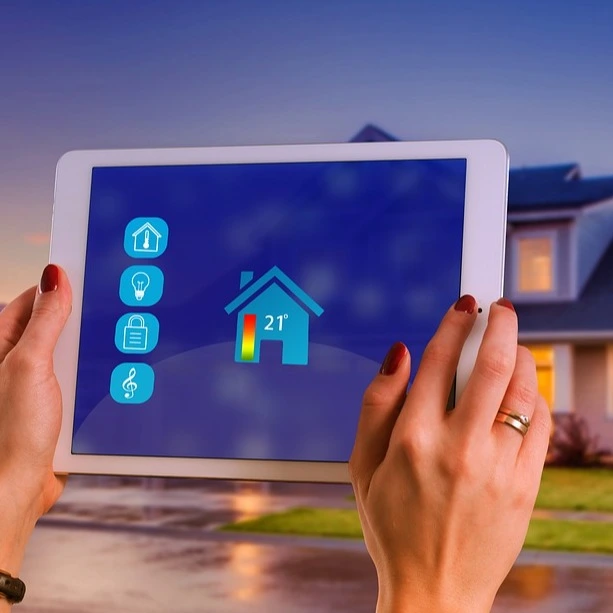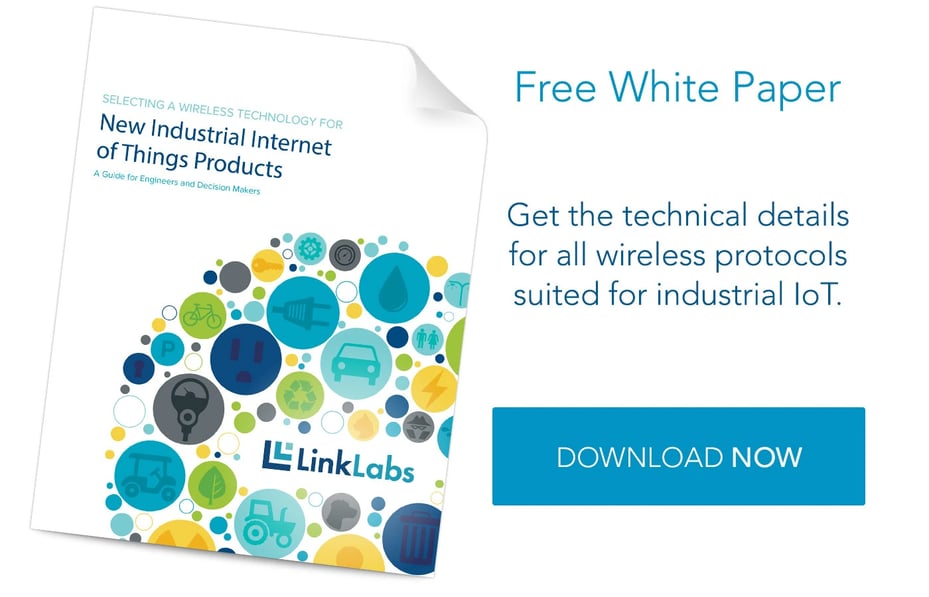Home Is Where the Smart Is
Even if you don’t consider yourself well informed about the exploding innovations of the Internet of Things and machine-to-machine communication, and you understand you’re not the most tech-savvy consumer, it’s impossible that you’ve missed the abundance of home automation products filling the shelves and ads of every home improvement store. Suddenly an ordinary errand for light bulbs will leave you wondering if your lamp could send you a message alerting you that the light bulb needs to be replaced. Furthermore, if your lamp is talking to you, could your refrigerator and sprinkler system be too? Experts say: Yes, the possibilities are endless. If that’s the case, where do you begin?
Any day-to-day, repeatable process is automatable with smart home applications. The greater the control and flexibility of these processes, the more energy and cost savings the resident experiences, which are factors anyone who pays utilities strives to moderate. The smart home revolution is likely to be more of an evolution, with the incorporation of one or two home systems at a time, gradually automating our households through smart mobile devices. However, with these elements of efficiency comes the question of ease of use. Will it bring you enjoyment or exasperation? With so many brands and models already available in an ever-growing market, how do you know which is best for you?
We’ll start with the basics. The most common applications of home automation are lighting control, HVAC, outdoor lawn irrigation, kitchen appliances, and security systems.
Lighting Control: Leaving the Dark Ages and Stepping Into the Light
Smart lighting allows you to control wall switches, blinds, and lamps, but how intuitive is a lighting control system? It turns out, quite; its capabilities are extensive. You’re able to schedule the times lights should turn on and off, decide which specific rooms should be illuminated at certain times, select the level of light which should be emitted, and choose how particular lights react through motion sensitivity, as seen with Belkin’s WeMo Switch + Motion, which is both affordable and easy to use with its plug-and-play simplicity.
HVAC Regulation: No Longer Burned by Your Heating Bill
As fuel costs rise and the availability and sustainability of our resources becomes a greater concern, heating/cooling our homes efficiently is less a budgetary bonus and more of a necessity. Over the past year, smart thermostats and automated home heating systems have become more readily available and easily incorporate into any home. Heating and cooling our homes consumes an average of 50% of energy costs yearly, making daily HVAC regulation progressively rewarding. Maintaining a substantial lead among the nearly non-existent competition, the Nest Learning Thermostat, learns your heating and cooling preferences over time, eliminating the need for programming and is accessible from your smartphone app. With automated HVAC you are able to reduce the heat when a room is unoccupied, and increase or decrease it at specific times based on your schedule and occupancy.
Lawn Irrigation Systems: The Grass is Always Greener
A lush and healthy lawn is a source of pride for most homeowners, but the weather doesn’t always cooperate and provide the adequate elements for a flourishing landscape. For decades we’ve relied on sprinkler systems to keep our yards at peak presentation, but at what cost? The average American home spends approximately 30% of their daily water usage on lawn and garden maintenance. Nearly half of that amount is wasted due to inefficiency. If you apply that statistic to the national average, up to 4.5 billion gallons of water is wasted per day through ineffective watering methods. If we reflect upon the monetary impact of this, it results in Americans spending over a thousand dollars a year in water, with a portion of that being waste. The global effects are even greater when you consider the growing concern over climate change and the dramatic decrease in agricultural natural resources. However, sprinkler control systems, like Skydrop, are providing water regulation through real-time communication with local weather data. If a rainstorm develops and deposits two inches of rainwater on your lawn, the automated sprinkler detects the saturation and disables its scheduled watering. Conversely, the system will be alerted to dry conditions and supply the necessary amount of nourishment, without over-watering.
Smart Appliances: What’s for Dinner?
Will smart kitchen appliances actually make you a better cook? Maybe. Smart refrigerators, such as LG’s Smart ThinQ, allow you to scan grocery store receipts and keep an inventory of your items, and alerts you if an item is about to expire. More impressively, it suggests recipes based on your refrigerator’s contents and lets you know when you need to replace items. Smart ovens synch with your smartphone and automatically preheat to the correct temperature based on a recipe selected from your database. While these appliance options seem a bit superficial and convenience based, there is a conservation factor as well. By automating your kitchen appliance and making them accessible from your smart device, you’re able to sever the electricity supplied to unused appliances and reduce your energy consumption and costs. Considering the number of appliances the average household owns; this could save a substantial amount of money over time.
Security Systems: Knock, Knock…
Who’s there? The Internet of Things. While efficiency and conservation are certainly IoT benefits, its potential to have improved control over home security is a primary focus. Smart locks, like Kwikset’s Kevo, a Bluetooth-enabled electronic deadbolt, and various connected home security systems, offer a variety of features including door and window sensors, motion detectors, video cameras, and recording mechanisms. All of which are connected to a mobile device and accessible via the cloud, thus enabling you to access real-time information on the security status of your home. Naturally, there is a great deal of scrutiny regarding the level of trust in controlling your home’s security system via a mobile device, but it begs earnest exploration when weighing the potential benefits and peace of mind it provides homeowners.
How is the Seemingly Impossible, Possible?
Currently there are a handful of operating systems and networks allowing M2M communication; all of which present a handful of pros and cons, depending on your needs. Here’s a quick breakdown of the top contenders.
Wi-Fi
Undoubtedly, Wi-Fi is a fixture in nearly every home, so it goes without saying that a wide range of automated devices are already compatible with this standard and thus its advantages are numerous. Nearly everyone has access to Wi-Fi and many, if not all, consumers considering home automation systems have it installed. Wi-Fi was designed to handle large amounts of data traffic, so bandwidth to control your home devices is not an issue. From a security perspective, Wi-Fi Protected Access (WPA and WPA2) encryption has been shown to provide reasonable security for home users when activated and implemented.
However, Wi-Fi’s limited bandwidth is an issue. Its connection speeds can be lowered or even disrupted by having other Wi-Fi devices in the same general area. Thus, you can expect slower response times. The good news is that most home automation endpoints are not bandwidth hogs, so response time may not matter. Battery consumption is also problematic, as Wi-Fi consumes much more power than other technologies, and when combined with its limited bandwidth, it may not be an optimal solution.
Bluetooth Smart
Bluetooth Smart, or Bluetooth Low Energy (LE), is a energy efficient version of Bluetooth wireless technology often seen in smartphones, and ideal for use with a headset. Though its range is limited, its energy usage is quite low. Its energy efficiency, combined with its compatibility with existing smartphones and other devices, makes it easy for developers and OEMs to create solutions that can immediately be added to existing systems.
Although it uses different channels, Bluetooth LE operates in the already crowded 2.400 GHz-2.4835 GHz ISM band and the required data compression diminishes audio quality. If Bluetooth LE is primarily used within the home or in close proximity, its low energy usage and extensive battery life make it a viable option.
ZigBee
ZigBee, much like 6LoWPAN, is a low-cost, low-power, wireless mesh network developed by the IEEE (802.15.4) and has received ample attention as an up and coming protocol technology. Advances in ZigBee include connecting to the Internet using low-power, low cost ZigBee radios. The idea is to leverage the ZigBee radio send and receive IPv6 packets to enable applications to send data back to the user via the Internet. This has broad potential for home applications, but ZigBee’s prime drawback is its inability to communicate easily with other IP protocols.
LPWA Network
Wide-area, low-power wireless systems, such as Link Labs’ Symphony Link, allow end users to employ modules to communicate with a gateway. Symphony Link, for example, uses the Link Labs’ Radio module and the network specification incorporates star topology, wherein a set of end nodes communicates with a single gateway. This flexibility allows for a number of technical requirements to be met quickly, which is key in all home automation uses.
With Symphony Link technology, uplink and downlink are equalized at the gateway in real time, allowing up to 250,000 endpoints per gateway, with ranges over seven miles. This allows for quick deployment, a long-range network, extensive battery life, and all at a low cost to you, the consumer.
Roll Out the Welcome Mat
Clearly we are on the brink of a leap in technology and its new capabilities are both encouraging as well as intimidating. However, we don’t need to make this bound at once, we can take small steps forward. And along the way, perhaps you should be asking not what you can do for your home, but what your home can do for you.





